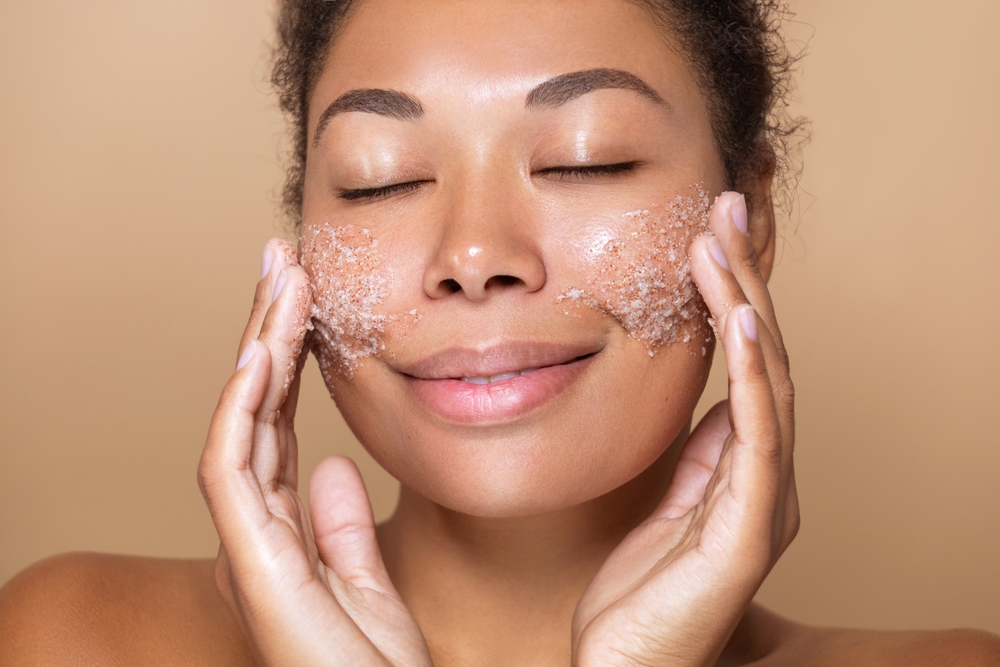Navigating the world of skincare can be overwhelming with the abundance of products on the market. While it may be tempting to layer different serums and creams to maximize results, mixing the wrong ingredients can do more harm than good. To maintain a healthy, glowing complexion, it’s crucial to know which combinations to avoid. Here are seven skincare ingredients you should never mix to ensure your skin stays protected and radiant.
1. Retinol and vitamin C
Both retinol and vitamin C are superstar ingredients in their own right, known for their anti-aging and brightening benefits. However, combining them can lead to irritation, especially for sensitive skin types.
Why they clash:
- Contrasting pH levels can cause sensitivity
- May lead to redness and dryness
- Can decrease the effectiveness of both ingredients
How they work individually:
- Retinol: Promotes cell turnover and collagen production
- Vitamin C: Brightens skin and protects against free radicals
Better approach: Use vitamin C in the morning for environmental protection, and reserve retinol for nighttime use to allow skin regeneration. This separation ensures each ingredient can work at its full potential without interfering with the other.
2. Benzoyl peroxide and retinol
Benzoyl peroxide is a go-to for acne treatment, but when paired with retinol, it can create a harsh effect on the skin.
Potential issues:
- Excessive dryness and peeling
- Increased skin irritation and redness
- Possible inflammation and discomfort
How they work individually:
- Benzoyl peroxide: Aggressively attacks acne-causing bacteria
- Retinol: Increases cell turnover and unclogs pores
Alternative usage: If you rely on both to manage your skin, alternate their use—benzoyl peroxide during the day and retinol at night. This approach allows you to benefit from both ingredients without overwhelming your skin barrier.
3. Salicylic acid and glycolic acid
Salicylic acid and glycolic acid are popular exfoliants, but mixing them can lead to over-exfoliation, leaving your skin raw and irritated.
Risks of combination:
- Over-exfoliation leading to raw, irritated skin
- Stripping of natural oils
- Weakening of the skin’s moisture barrier
- Potential for long-term sensitivity
How they work individually:
- Salicylic acid: Works deep within pores to clear out impurities
- Glycolic acid: Focuses on sloughing off dead skin cells on the surface
Safe usage: Choose one acid based on your skin’s needs and allow recovery time between applications. For example, use salicylic acid for acne-prone skin and glycolic acid for overall brightening and texture improvement.
4. Retinol and AHA/BHA
Retinol and alpha or beta hydroxy acids (AHAs/BHAs) are known for their exfoliating properties. However, using them together can lead to severe skin irritation.
Negative effects:
- Severe skin irritation and sensitivity
- Excessive peeling and dryness
- Increased risk of sunburn due to increased skin sensitivity
- Potential damage to the skin barrier
How they work individually:
- Retinol: Stimulates new cell growth and collagen production
- AHA/BHA: Chemical exfoliants that remove dead skin cells
Better practice: Alternate between retinol and AHAs/BHAs on different days or weeks to give your skin a break. This approach allows you to benefit from both types of ingredients without overwhelming your skin.
5. Niacinamide and vitamin C
Niacinamide, known for its calming and anti-inflammatory properties, is a fantastic ingredient for soothing irritated skin. Vitamin C, on the other hand, is prized for its brightening and antioxidant benefits. However, mixing the two can neutralize their effects.
Why they don’t mix:
- Clash in pH levels
- Reduced efficacy of both ingredients
- Potential for skin flushing or redness
How they work individually:
- Niacinamide: Calms inflammation and regulates oil production
- Vitamin C: Brightens skin and provides antioxidant protection
Optimal use: Apply vitamin C in the morning and niacinamide in the evening to maximize their individual benefits. This separation ensures that each ingredient can work effectively without interfering with the other.
6. Sunscreen and makeup primer
Sunscreen is non-negotiable in any skincare routine, but mixing it with certain makeup primers can dilute its effectiveness.
Potential issues:
- Diluted effectiveness of sunscreen
- Interference with proper sunscreen absorption
- Reduced UV protection
Why it matters:
- Sunscreen needs to form an even, uninterrupted layer on the skin
- Some primers can create a barrier that prevents sunscreen from working effectively
Correct application: Apply sunscreen first, allow it to absorb fully (usually about 15 minutes), then layer makeup primer on top. This method ensures you’re getting full sun protection while still benefiting from your primer.
7. Oil-based and water-based products
It’s a basic chemistry principle—oil and water don’t mix. In skincare, this means that layering oil-based products on top of water-based products can prevent the latter from properly absorbing into the skin.
Why it’s problematic:
- Oil creates a barrier that blocks water-based products from penetrating the skin
- Reduced efficacy of water-based serums or treatments
- Potential for pilling or uneven application of products
How different bases work:
- Water-based products: Typically lighter, absorb quickly into the skin
- Oil-based products: Create a protective barrier, good for locking in moisture
Proper layering: Apply water-based products first, allow full absorption, then follow with oil-based products. This order ensures that your skin benefits from all the products in your routine.
Understanding skincare compatibility
When building a skincare routine, consider these factors:
- Ingredient interactions: Research how different active ingredients work together
- pH levels: Be aware of how pH differences can affect product efficacy
- Skin type: Consider your skin’s specific needs and sensitivities
- Time of application: Some ingredients are better suited for daytime or nighttime use
- Product formulations: Different product types (serums, creams, oils) may interact differently
Tips for a balanced skincare routine
- Introduce new products gradually to monitor skin reactions
- Allow time between applying different products for proper absorption
- When in doubt, consult a dermatologist for personalized advice
- Pay attention to your skin’s response and adjust your routine accordingly
- Don’t overload your skin with too many active ingredients at once
- Always patch test new products before applying them to your entire face
The importance of ingredient awareness
Understanding which skincare ingredients shouldn’t be mixed is crucial for maintaining healthy skin. While it’s tempting to layer multiple products for quick results, this approach can often lead to irritation and damage. By being mindful of ingredient interactions and approaching your skincare routine with caution, you can achieve the glowing, healthy skin you desire without compromising its well-being.
Remember, a simple, well-researched routine is often more effective than a complex one with conflicting ingredients. Always prioritize your skin’s health over trends, and don’t hesitate to seek professional advice when incorporating new products or ingredients into your skincare regimen.
Balance and caution are key in your skincare routine
Navigating the complex world of skincare requires knowledge and patience. By understanding which ingredients shouldn’t be mixed, you can create a routine that maximizes benefits while minimizing risks. Remember that everyone’s skin is different, so what works for one person may not work for another. Listen to your skin, be consistent with your routine, and don’t be afraid to simplify if you’re experiencing irritation.
The key to healthy, radiant skin lies not in using every trending ingredient, but in finding the right balance for your unique skin needs. With careful consideration and the right approach, you can achieve the glowing complexion you’ve always wanted, all while maintaining the long-term health of your skin.
This story was created using AI technology.










